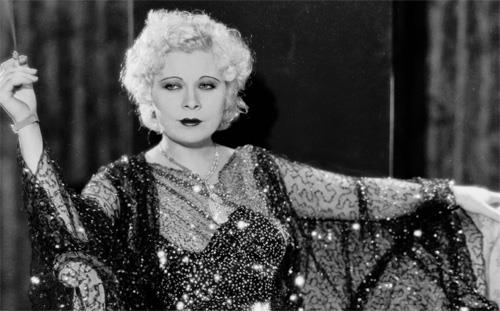
Long ago and not so far away, in the dark ages before social media, Mae West was better known to Americans than Kim Kardashian is today.
And she had a whole lot more to offer.
Mae West: Dirty Blonde, an American Masters production that airs Tuesday at 8 p.m. ET on PBS (check local listings), reminds us how she became a household name, and why it wasn’t just for the reason everyone assumed.
West became a minor vaudeville star, a popular Broadway star, and then a major movie star by packaging herself as a mega-confident dame with a whole lot of attitude.
She sold sex appeal thanks to glamorous outfits, a sultry walk, and a bottomless supply of half-murmured one-liners delivered with an unapologetic wink.
“Come up and see me some time,” the slightly rearranged version of her signature line, was maybe not even her best.
Describing one of her productions, she wrote, “It’s about a girl who lost her reputation and never missed it.”
Dirty Blonde, the work of Sally Rosenthal and Julia Marchesi, celebrates West largely for creating a female character who dared to appropriate the persona of a thousand devilish male rogues. She sampled and enjoyed men the way male characters had been sampling and enjoying women since the beginning of drama.
She wasn’t a feminist in the sense of carrying signs demanding the vote, but she was 100% feminist in saying: Hey, if he can do it, I can do it, too.
In one of the many surprising developments during West’s career, Hollywood discovered that men weren’t her only fans. It was assumed that would be the case since she had built a reputation on Broadway as a sexual magnet. But it turned out that women also loved a female character who was never subservient to the men around her.
In the broader biographical picture, West comes off here as a shrewd businesswoman who had been pushed into show biz by her mother and soon realized she loved it.
She spent years developing and refining what would eventually become the full Mae West character. When she didn’t find material she liked, she began writing her own plays and then movie scripts.
As this suggests, she skipped right past diva to become what we would today call a control freak. She oversaw everything in her movies, from lighting to directing, and once it became clear that pictures like I’m No Angel and She Done Him Wrong would make lots of money, Hollywood let her do it.
By 1935, she was the highest-paid woman in America.
Once she created the Mae West character, Dirty Blonde explains, she never broke it. On-screen or off, she was Mae West for the rest of her life, right up through late-in-life cult flicks like Myra Breckinridge and Sextette.
Bad films, but cherished Mae West vehicles.
Dirty Blonde doesn’t poke too far into West’s private life. She only married once, and later she denied it had even happened. She preferred a string of lovers, including stars like George Raft and musclemen in general. She loved boxing and boxers.
Excerpts here from interviews West gave late in her life sound honest and not terribly revealing.
Dirty Blonde spends a bit of time on the sociology of matters other than sex and female empowerment, including West’s mixed legacy on race.
She loved black jazz and convinced Paramount Pictures to hire Duke Ellington for one of her musicals. She also cast black actresses in all her films.
Those actresses, however, all played maids, and while West’s character had a friendly relationship with them, they were still her paid servants. While her intentions may have been enlightened for the 1930s, they don’t stamp her as a civil rights pioneer.
In the end, Dirty Blonde acknowledges that West was always a figure of high camp. It suggests she took that as a compliment.
Rosenthal and Marchesi argue that in the process, she also helped pave the way for women to raise their own voices and set their own courses.
That is, Mae West wasn’t simply fascinating to look at and listen to. She also had something to say.